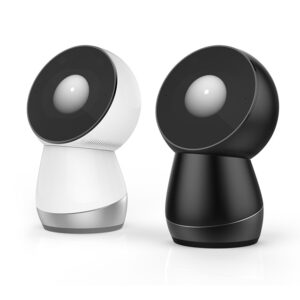Jibo, is a friendly, helpful and intelligent robot who can sense and respond, and learns as you engage with him.
The World’s first social household robot called Jibo has been recently launched by Jibo Inc. Jibo is a 11-inch-tall.Friendly, helpful and intelligent robot who can sense and respond, and learns as you engage with him.
This robot represents a new class of consumer robots. He’s a social robot and is not designed to vacuum your floor. He’s not designed to look humanoid with a nose, two eyes, two ears and a mouth. He’s very much designed to be a character in a way that Disney or Pixar would create a character.
Jibo has a lot of handy capabilities, such as taking pictures, recognizing individual family members, announcing message notifications and other features.
It can be an engaging companion to teach first grade math to your kid, to remind grandma to take her medicine and to make sure you get the groceries you need
More skills can also be added to it as the robot is open to app developers. Jibo will have two built-in serial ports so developers can create accessories such as wheels if they so choose.
Apps that developers create for Jibo will be available through its own app store that will roll out with its 2016 launch.
“Jibo is going through the commercialization process right now,” said Cynthia Breazeal, the MIT professor and social robotics pioneer who is the driving force behind the 11-inch-tall robot.
Jibo is not meant to be a “slave-robot”. What makes it different from, say, a Roomba or an entertainment-oriented toy robot is, in Breazeal’s words, “this notion of platform, taking something from the playbook of the Android and iOS app ecosystems.”
Jibo promises a sense of humor. With built-in cameras, it can recognize you and learn from you over time. It might ask for your favorite color and factor that in when it presents information.
And Jibo is being designed to recognize critical cues, like whether you’re smiling or not. It might use that to decide when to snap a picture of you or other family members.
Jibo will communicate by speech, by making expressive sounds, and by using graphics. There are times you need to touch Jibo, to help the robot know if you like something.
“There is learning, there is adaptation, there is personalization, there is perception, there is decision-making, there’s communication and there’s expression,” Breazeal says.
Though social robots haven’t taken over the living room just yet, other areas of robotics, such as homecare and lawncare robots are a growing market.
Jibo will begin shipping the first units in 2016, though developers will be able to test their apps on virtual simulator units at an earlier date
For more information please visit: www.jibo.com


Comments are closed.